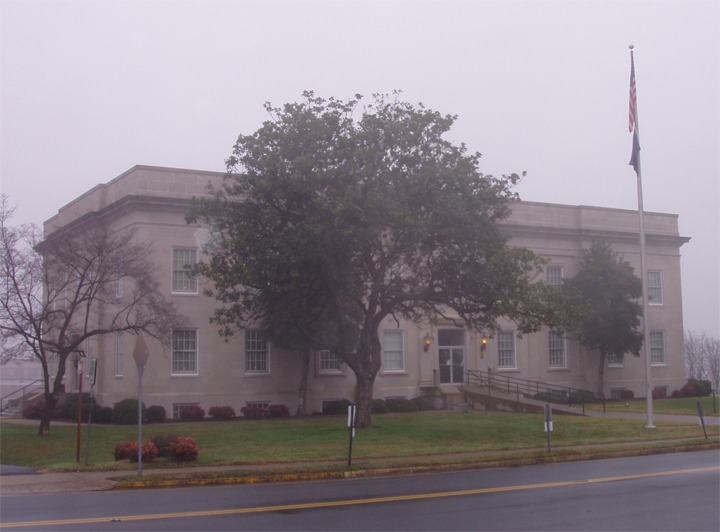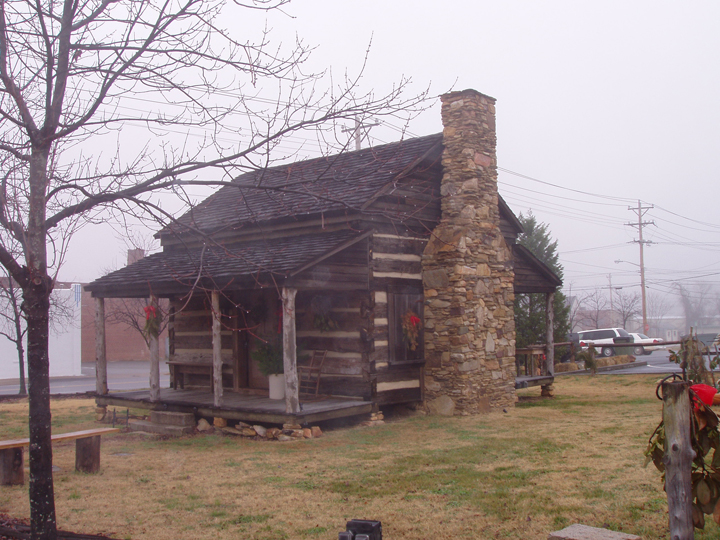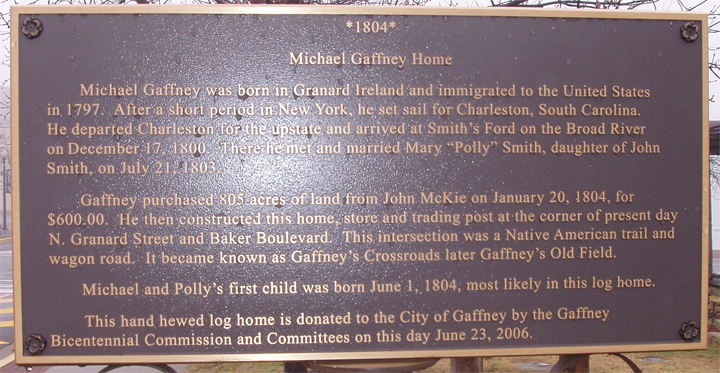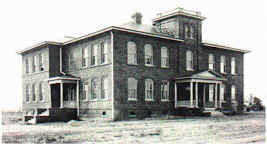 |
||||
|
|
||||
 Cherokee County Court House - Gaffney, SC (2008)   In 1803, Michael Gaffney established a store where two Indian trails crossed, the current intersection of the highways U.S. 29 and SC-11. His store flourished and soon a resort hotel was built near Limestone Springs. An iron works was established at Cherokee Ford on the Broad River. Gaffney was incorporated in 1857. As the settlement of Gaffney grew, the hotel was converted into a college for women, it now houses the administrative offices of Limestone College. The Atlanta & Richmond Air Line Railway was built in 1873 and the tracks were surveyed, streets laid out, and homes and business built. This important railroad was soon renamed as the Atlanta & Charlotte Air Line Railway, and a station was built at Gaffney City in 1879. Gaffney's textile industry was established in 1887 and cotton became the major agricultural crop. Click Here to learn about the "Street Railway" that operated in Gaffney from 1892 to ??? In 1897, Cherokee County was formed and Gaffney became its County Seat. Public utilities were established. The dreams of a public library and hospital became true. Agriculture and the spinning and weaving of cotton were the main employment until 1945. With the end of World War II, the diversification of industry started. Textiles remained strong with the addition of dyeing, finishing, and apparel manufacturing. The metal fabricating industry discovered Gaffney. Food processing became a major employer. Distribution centers were established to utilize the highway and rail systems. Cotton gave way to peaches . There are currently 36 churches representing 13 denominations in the Gaffney area.  Cherokee Avenue School in 1910 - Gaffney, South Carolina On December 17, 1800, a man named Michael Gaffney arrived in the upcountry. It was then when the first store was established in this section, and owned by Michael Gaffney and his co-partner Mr. McCarton. It was located at first, a few miles west of the point where Gaffney city now stands, not far from Thicketty Creek. Mr. McCarton came ahead of Mr. Gaffney and established the store. Mr.Gaffney seems to have been the leading man of the business, for he arrived in Charleston from New York on February 3, 1800. He spent the summer in Charleston, where he had a severe attack of fever. By this time, Mr. Gaffney says in his journal, "I was beginning to get pretty tired of Charleston. It made me think of going to my partner, a Mr. McCarton, who lived about 250 miles up the country northwest of Charleston." He left Charleston on December 11, 1800 and arrived at our new home in six days, which was December 17,1800. The coming of this remarkable man into this locality, was an important event in the history of our section of the country. The store was soon moved from its first location to the place long known as Gaffney's Cross Roads, On July 21, 1803, some months after he established his store at Cross Roads, he married Mary Smith, who resided near Smith’s Ford. Sometime in 1804, Michael moved his family to a newly-constructed house near his store. For a number of years thereafter the place was known as Gaffney’s Cross Roads. Although for a number of years there were no other buildings at the site except his barn, his home, and the store, which also served as a tavern and lodging house for travelers, it’s name was changed to Gaffney’s Old Field, and still later it was called Gaffney’s. The site was later incorporated as the town of Gaffney City. In his journal, Michael Gaffney records the following remarks about this settlement: "I expected to see a fine country, but was surprised to find it poor, sandy, rocky, and hilly. The people are poor. Their dress generally is a hunting shirt and trousers of coarse cotton yarn. Every farmer or planter is his own shoemaker, tanner, tailor, carpenter, brassier, and in fact, everything else. Everything comes by the farmer or his family. It is the business of the wife and daughter to pick cotton and have it brought home, pick it from the seed, spin it, weave it, and make it ready for your back. Some of the girls make very handsome cloth. Here they must do everything from cooking to plowing, and after that they have no more life than Indian squaws. They hardly ever sit down to the table with there husbands, but wait on them like menial servants." Allowances must be made for this description given by one fresh from the old country and used to city life, as was the case with Michael Gaffney, the pioneer merchant of our section. The lot of our mothers in colonial times, was indeed, a hard one as compared with that of women in the mother countries, of that date, or with the women of our time even here. But our mothers were brave and industrious and acted their part in life voluntarily and with fortitude Robert Michael Gaffney, also known as Captain Michael Gaffney, and Mary had nine children: Nancy, Lucinda, Melinda Riley, James Madison Smith, Henry Green, Cornelius John, Gistavus Joseph, William Godolphen, and Thomas Westhaven. Established in Spartanburg District (county) as Limestone Springs, the town was granted a U.S. Post Office on May 14, 1836, and its first Postmaster was Mr. William Murray. On April 8, 1879, the Post Office Department officially changed the name to Gaffney City, with Postmaster M.M. Glover. In 1892, the name was officially changed to simply Gaffney. In 1897, Cherokee County was created from parts of Spartanburg, Union, and York counties, and Gaffney was named the new County Seat. Its Post Office has been in continuous operation ever since inception in 1836. |
 |
 |
© 2007 - J.D. Lewis - PO Box 1188 - Little River, SC 29566 - All Rights Reserved